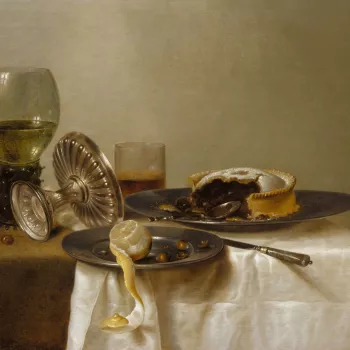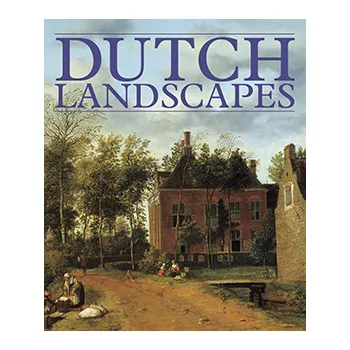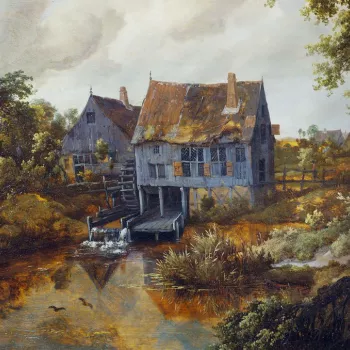Shepherds with their Flocks in a Landscape with Roman Ruins c.1620-25
Oil on copper | 31.7 x 40.0 cm (support, canvas/panel/stretcher external) | RCIN 404819
-
Poelenburgh was a Roman Catholic and (like many Italianate painters) a native of Utrecht, the most Catholic of Dutch cities. He studied there with Abraham Bloemaert before travelling to Rome in 1617, where he remained until 1627. Poelenburgh enjoyed an international reputation during his lifetime: working for Cosimo II de’ Medici in Florence in 1620–21 and for Charles I in London off and on from 1637 to 1641. The rest of his career was spent in Utrecht, where he received important commissions from local aristocrats and from Prince Fredrick Henry of Orange.
The early date of this work is suggested by comparison with the similar work in the Louvre, which is signed and dated 1620. It gives an excellent idea of the sort of painting for which Poelenburgh (1586-1667) was famous. The market for small-scale Roman landscapes with a figure narrative was created by two artists of exceptional international fame, Adam Elsheimer and Paulus Bril; their death within a few years (in 1610 and 1626) created a gap in the market which Poelenburgh effectively filled. All three artists mentioned above set out their landscapes like a stage, with every element seeming to lie parallel or perpendicular to the picture plane. The alternation of episodes from one side to the other as the eye ‘zig-zags’ into the distance enlivens what is essentially a vista towards a central vanishing point. The handling of these conventions has been transformed in the 20 years between Bril’s landscapes and Poelenburgh’s: here the horizon is lower, the perspective more strictly observed, the outlines of the landscape less pronounced and decoratively contrived, the colours more blended. Elsheimer contributed greatly to these developments, but Poelenburgh’s smooth, almost enamel surfaces and neat shaping of the elements is utterly unlike his work.
Though a brightly coloured and light-filled scene, Poelenburgh’s imagery draws heavily on the sinister and sepulchral aspect of the landscape immediately surrounding seventeenth-century Rome, which was dominated by uncleared and uninhabitable ancient ruins. The houses to the left grow out of the ruined Roman arches which themselves rest on monstrous rock formations. Similar human termite hills appear in the distance; the boy in the left foreground appears to have emerged from an open grave. The consistent brown colour of the middle distance and imprecise form suggests that all human architecture is destined to melt into the sands of a giant hourglass.
This is certainly an imaginary view, but the fountain to the left was designed by Giacomo della Porta and installed in the Campo Vaccino in 1593 to serve the cattle market. The figures similarly have one foot in reality: some recognisable Roman nobles and shepherds in the background, and a couple in the foreground resembling Mary and Joseph preparing to flee to Egypt.
Signed on the broken capital on right: 'C.P.'Provenance
Purchased by George IV from Sir Thomas Baring as part of a group of 86 Dutch and Flemish paintings, most of which were collected by Sir Thomas’s father, Sir Francis Baring; they arrived at Carlton House on 6 May 1814; recorded in the Bow Room, Ground Floor, at Carlton House in 1819 (no 123); in the Picture Gallery at Buckingham Palace in 1841 (no 22)
-
Creator(s)
Previously attributed to (artist)Acquirer(s)
-
Medium and techniques
Oil on copper
Measurements
31.7 x 40.0 cm (support, canvas/panel/stretcher external)
Other number(s)











